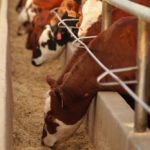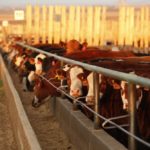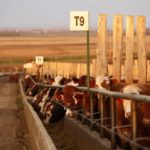Western Canadian feeder cattle prices were relatively unchanged from week-ago levels. Limited cattle were on offer with the shortened holiday week, but quality groups were well bid. Feedlot operators have been aggressively selling fed cattle, freeing up pen space. Although feedlot inventories decline in the summer, many operations want to carry sufficient numbers into the […] Read more

Klassen: Feeder market eyes feed grain rally

Klassen: Feeder cattle market enters summer doldrums
Western Canadian feeder cattle prices steady to $5 lower across all weight categories last week with most auction barns starting their summer holiday schedule. Most sales rings are closed next week. Limited numbers were on offer across the Prairies, which caused diverse price action in certain regions. Heavier feeders are hard to come by this […] Read more

Klassen: Low volumes characterize feeder cattle market
Western Canadian feeder cattle prices were relatively unchanged from week-ago levels; however, low volumes and various-quality cattle characterized the market. It’s that time of year, when stragglers and recovering sick animals come available and discounts were quite sizeable on substandard cattle. Quality late bloomers were well bid and there was no shortage of buyers. Feedlot […] Read more

Klassen: Weaker fed cattle prices pressure feeder market
Western Canadian feeder cattle prices traded $3-$7 lower on average, with shorter-keep replacements over 850 lbs. as much as $10 lower in some cases. Alberta packers were buying fed cattle in the range of $159-$161, down nearly $12 from week-ago levels. Most auction markets had limited numbers on offer, with many sales barns in summer […] Read more

Klassen: Feeder cattle market looks for direction
Western Canadian feeder cattle prices were once again unchanged from week-ago levels. After the major rally in late April and May, the market has basically traded in a sideways range and is looking for direction. Feedlot operators have experienced healthy margins during the first half of 2017 and this will likely continue until September. They […] Read more

Klassen: Feeder cattle prices remain firm
Western Canadian feeder cattle prices were relatively unchanged from week-ago levels, although larger groups of quality cattle were priced $3-$5 higher. Most auction barns reported small packages on offer with a larger variance in quality. However, there was limited slippage, even on late stragglers. Prices were rather surprising, with one producer noting that medium-frame, medium- […] Read more

Klassen: Feeder cattle market stabilizes
After the recent rally, cattle buyers noted that price spreads between weight categories came back in line with traditional levels this week. Shorter-keep yearlings were steady to $4 weaker compared to seven days earlier; mid-weight cattle from 700 to 800 lbs. were relatively unchanged while feeders under 700 lbs. were $4 to $8 higher. On […] Read more

Klassen: Feeder cattle market experiences mixed tone
Western Canadian feeder cattle markets were rather subdued this past week; average prices were unchanged from seven days earlier. However, the bloom has come off the rose as the extreme highs from earlier in May have evaporated. Late in the week, shorter-keep cattle appeared to trade $3-$5 higher, especially on higher-quality larger groups. Major feedlot […] Read more

Klassen: Feeder cattle market remains firm
Western Canadian feeder cattle markets traded $3-$5 above week-ago levels although lighter weight categories experienced week-over-week gains of $8 to as much as $12. The fed cattle market went through a correction, with live sales quoted from $181 to $186, down from the last week average trade of $195. This weaker live cattle trade appeared […] Read more

Klassen: Feeder cattle markets erupt
Western Canadian feeder cattle markets traded $10-$13 above week-ago levels and in some cases as high as $20. Buying interest exploded early in the week as adverse weather wreaked havoc across the U.S. southern Plains. Demand for replacements continued to intensify as the fed cattle prices surged. Alberta packers experienced strong competition from buyers south […] Read more

